The Leidenfrost Effect Occurs When A Liquid Is Exposed To A Surface So Hot That It Instantly Vaporizes
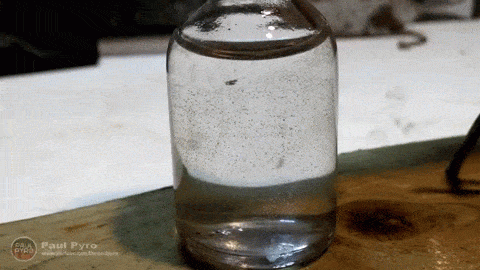
The Leidenfrost effect occurs when a liquid is exposed to a surface so hot that it instantly vaporizes part of the liquid. It’s typically seen with a drop of water on a very hot pan; the drop will slide around, nearly frictionless, upon a cushion of its own vapor. You can see the effect when plunging a hot object into a bath of liquid, too. This is what happens when you quickly dunk a hand in liquid nitrogen (not recommended, incidentally) or when you drop a red hot steel ball into water like above. In this case, the object is so hot that it gets encased in a layer of water vapor. If you could maintain the temperature difference necessary to keep the vapor layer intact, you could move underwater at high speeds with low drag, similar to the effects of supercavitation. (Image credit: Paul Pyro, source)
If you enjoy FYFD, please consider supporting the site by becoming a patron!
More Posts from Aaresiv and Others

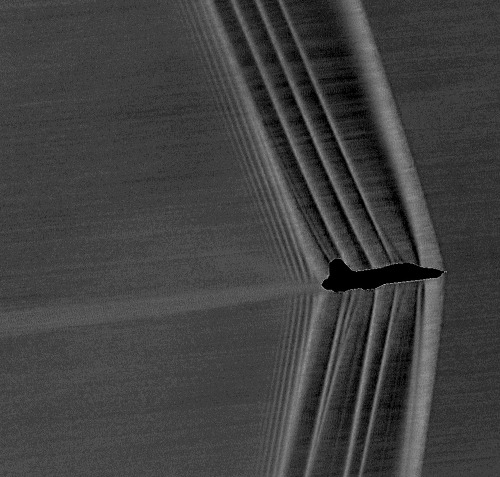
This week NASA released two new images of the shock waves surrounding T-38C jets in free flight. They’re the result of NASA’s new adaptations of the schlieren photography technique, which has let scientists visualize shock waves (in the lab, at least) for more than a century. To celebrate, I thought it would be fun to demonstrate some of the data engineers can extract from images like the one above. So I’m going to show you how to calculate how fast this plane was flying!
Keep reading

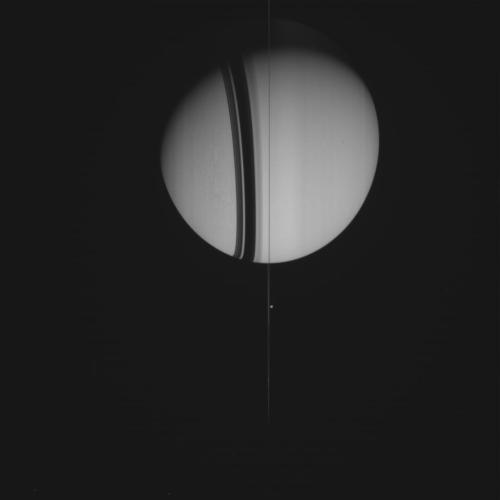
Planet Saturn, August 5, 2007, observed by the Cassini space probe from a distance of approximately 2,469,771 miles (3,974,711 kilometers). (NASA)

Farewell Super Moon
See you some time soon






Moon Facts: The Moon is moving approximately 3.8cm away from the Earth each year.








If there is magic on this planet, it is contained in water :D
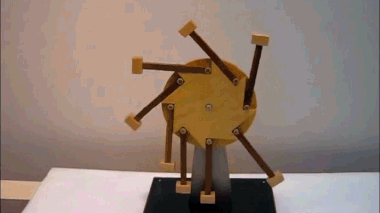
A perpetual motion machine is the key to free energy creation.
follow us for more science gifs«
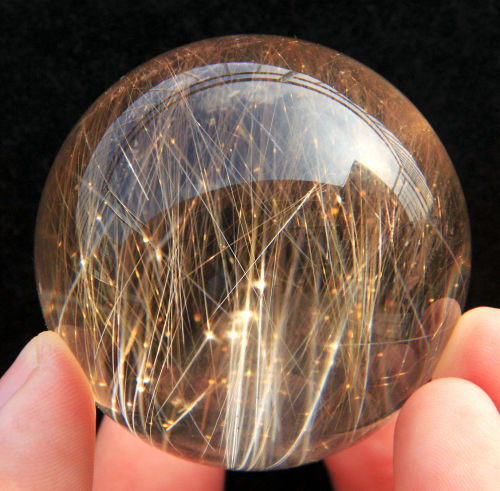
Rutilated Quartz Sphere


Cobaltoan Calcite - Aghbar Mine, Bou Azzer, Tazenakht, Ouarzazate Province, Souss-Massa-Draa Region, Morocco
-
 sinnamonrollkitten liked this · 4 years ago
sinnamonrollkitten liked this · 4 years ago -
 techjum reblogged this · 5 years ago
techjum reblogged this · 5 years ago -
 dionysusof0 reblogged this · 5 years ago
dionysusof0 reblogged this · 5 years ago -
 hamath liked this · 5 years ago
hamath liked this · 5 years ago -
 fandommes reblogged this · 5 years ago
fandommes reblogged this · 5 years ago -
 whitestnoise reblogged this · 5 years ago
whitestnoise reblogged this · 5 years ago -
 fillytoria liked this · 5 years ago
fillytoria liked this · 5 years ago -
 sarahmusicandthings liked this · 6 years ago
sarahmusicandthings liked this · 6 years ago -
 tinygods liked this · 6 years ago
tinygods liked this · 6 years ago -
 gedankensprung2 liked this · 7 years ago
gedankensprung2 liked this · 7 years ago -
 harvardnerdyy21 reblogged this · 8 years ago
harvardnerdyy21 reblogged this · 8 years ago -
 harvardnerdyy21 liked this · 8 years ago
harvardnerdyy21 liked this · 8 years ago -
 auroral-melody reblogged this · 8 years ago
auroral-melody reblogged this · 8 years ago -
 auroral-melody liked this · 8 years ago
auroral-melody liked this · 8 years ago -
 lonamatatastudies-blog reblogged this · 8 years ago
lonamatatastudies-blog reblogged this · 8 years ago -
 qxzyz liked this · 8 years ago
qxzyz liked this · 8 years ago -
 lonrism reblogged this · 8 years ago
lonrism reblogged this · 8 years ago -
 thinkingonaname reblogged this · 8 years ago
thinkingonaname reblogged this · 8 years ago -
 dreaming-of-excellence liked this · 8 years ago
dreaming-of-excellence liked this · 8 years ago -
 majulyrete liked this · 8 years ago
majulyrete liked this · 8 years ago -
 thighofnewt liked this · 8 years ago
thighofnewt liked this · 8 years ago -
 cowgaykermit reblogged this · 8 years ago
cowgaykermit reblogged this · 8 years ago -
 thinkingonaname liked this · 8 years ago
thinkingonaname liked this · 8 years ago -
 aggrovigliamento-blog reblogged this · 8 years ago
aggrovigliamento-blog reblogged this · 8 years ago -
 catphoenix liked this · 8 years ago
catphoenix liked this · 8 years ago -
 haramless reblogged this · 8 years ago
haramless reblogged this · 8 years ago -
 genevievedarcygranger reblogged this · 9 years ago
genevievedarcygranger reblogged this · 9 years ago -
 genevievedarcygranger liked this · 9 years ago
genevievedarcygranger liked this · 9 years ago -
 moltenmemecore liked this · 9 years ago
moltenmemecore liked this · 9 years ago -
 redundunant reblogged this · 9 years ago
redundunant reblogged this · 9 years ago -
 jeffersonthemadhatter reblogged this · 9 years ago
jeffersonthemadhatter reblogged this · 9 years ago -
 onecelestialbeing reblogged this · 9 years ago
onecelestialbeing reblogged this · 9 years ago -
 classifiedbucket-blog reblogged this · 9 years ago
classifiedbucket-blog reblogged this · 9 years ago -
 q-lvck liked this · 9 years ago
q-lvck liked this · 9 years ago -
 beccaaaahhhhhhhhhhhhh reblogged this · 9 years ago
beccaaaahhhhhhhhhhhhh reblogged this · 9 years ago -
 beccaaaahhhhhhhhhhhhh liked this · 9 years ago
beccaaaahhhhhhhhhhhhh liked this · 9 years ago -
 drmusclewanted liked this · 9 years ago
drmusclewanted liked this · 9 years ago -
 drjefff reblogged this · 9 years ago
drjefff reblogged this · 9 years ago -
 likeforestfires liked this · 9 years ago
likeforestfires liked this · 9 years ago -
 blaschka reblogged this · 9 years ago
blaschka reblogged this · 9 years ago